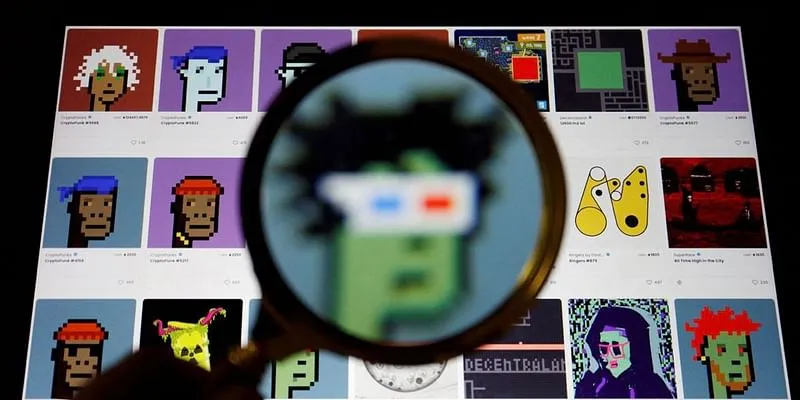Artfi makes it easy to invest in fractional NFTs of fine art
Launched by art entrepreneur Asif Kamal, Artfi leverages NFT tech to fractionalise fine art. It is building a platform for purchasing and selling NFTs which represent an investment in iconic blue-chip artworks of world-renowned artists such as VS Gaitonde, Sacha Jafri, and more.
Buying fine art can get quite complicated, from shelling out an exorbitant sum of money to paying upkeep charges.
Take, for instance, the sale of a rare painting by India’s foremost abstract artist VS Gaitonde. In February this year, it was sold for Rs 42 crore at Pundole’s (an auction house) in Mumbai, making it one of the most expensive pieces of modern or contemporary Indian art globally.
In the art world, this is just the tip of the iceberg.
“In the traditional fine art industry, a buyer spending millions of dollars on artwork only gets a one-page document as an authenticity certificate. There is no technology to prevent tampering with it,” says Asif Kamal, founder of —a Web3 company looking to democratise art through Non-Fungible Tokens (NFT).
Artfi plans to tokenise physical artwork and then break it down into pieces (a process known as fractionalising)—all of which can be owned by anyone, anywhere in the world in the form of NFTs.
Its platform will allow for purchasing and selling these NFTs which represent an investment in iconic blue-chip artworks of world-renowned artists such as VS Gaitonde, Sacha Jafri, and more.
“In the traditional art world, collectors also have no transparency or proof of history and previous sales, etc. With NFTs, in the form of authentic digital certificates, it is possible to record proof of ownership and transfer on the blockchain,” the founder tells The Decrypting Story.
Bringing new perspectives to the art industry
Asif knows his way through this industry. Having run an international art-house and auction company Alturaash, he knows his way around the business. While the challenge is daunting, the company is expecting that fractionalisation will do away with the problem of exclusive ownership.
Once the startup receives physical artwork via consignment—a process involving trusting an art gallery or auction house with a piece of art to be sold—the startup then tokenises it and then fractionalises the painting. This can be anywhere between 5,000 pieces to 10,000 pieces.
It then opens the NFTs up for sale to anyone interested. “By fractionalising the art, we sell to hundreds of buyers, not one. And buyers are free to trade these NFTs in a secondary marketplace. As such, the nature of the fine art asset changes into a tradable asset,” Asif explains.
It was this bet on fractionalisation that led to the project raising $3.26 million at a valuation of $100 million in a funding round led by private investors.
It is now on its way to building out a large portfolio of art. Thus far, Artfi has consigned art from MF Husain, and VS Gaitonde, as well as onboarded Sacha Jafri and consigned his museum collection (worth over $10 million), and has $16 million worth of assets under management, waiting to be converted to NFTs.
Of course, Artfi isn’t the first to do this. Masterworks, a non-Web3 player in the fine art segment, already allows users to own a piece of exquisite art, starting at prices as low as $20 a piece.
Some well known museums and auction houses such as Sotheby’s and Christie’s have undertaken experimenting with Web3 too.

What sets Artfi apart from the rest
Until consignment, Artfi’s process is similar to that of any other art museum. Post this, things work differently.
The startup breaks down the digital version of the art into a grid of thousands of smaller pieces (say, 10,000 pieces).
According to Kamal, each of Artfi’s pieces are one of a kind, as they have predefined coordinates assigned for individual NFTs.
The advantage here, is that these NFTs, after they are live, can be bought and sold by retail investors across Artfi's as well as secondary NFT marketplaces—unlike exclusive closed marketplaces that do not allow for buying and selling across markets.
Besides this, the startup is exploring ways to enable holders to receive a portion of royalty on future trades made, as well as some features to stake their NFTs.
Scepticism around NFTs has revolved around their lack of connection to real world assets, or a lack of utility. The project addresses this by not only allowing customers to own a piece of a physical asset, but also granting holders exclusive access to its museum in Dubai (where the physical version of these paintings are displayed).
When a suitable selling opportunity is identified, Artfi may consult the NFT holders and sell the artwork at a higher price and distribute proceeds from the sale back to all the holders. This is done in exchange for the NFTs being burned—a process that allows these assets to maintain a steady price.
With markets for blue-chip NFTs (such as Bored Apes or CryptoPunks) undergoing a bear season, tokenisation of digital and physical assets (as well as their fractionalisation) is gaining attention.
Unlike blue-chip NFTs, which often have a high barrier of entry, NFTs minted by companies such as Artfi are easier to acquire and could accrue value over time, especially since they are tied to assets like paintings. “These NFTs are more affordable and accessible than a Bored Ape,” says Asif.
Artfi joins the likes of companies like Estate Protocol and FanTiger, who use similar tech in the domains of real-estate and music, respectively.

A challenging but promising future
Artfi, which is building an end-to-end ecosystem for democratising fine art, has got its work cut out for it. Not only does it have to acquire, consign, tokenise and fractionalise art, but also build a marketplace, maintain and run its museum, and resell its art at the right time.
Asif says conceptualising the flow was challenging when he first started thinking about launching his project. But now, a few months down the line, the process is now clear enough for the team to set out building each piece, he says.
Then there is the question of fluctuating demand. While Asif is confident Artfi’s offerings will have sufficient demand, if there is lower traffic, it may also use its private network of interested parties to take part in the drop.
As is the case with crypto—Artfi also faces legal hurdles in what it's attempting to execute. Masterworks have to undergo a tedious and jurisdiction-specific process to allow people to invest in pieces of blue-chip art.
This involves purchasing a painting and filing it with American regulators—The Securities and Exchanges Commission (SEC)—as a public offering or IPO, after which it can sell “shares” of this painting to users. This limits the scope of Masterworks’ offering to those within the US, and particularly, to those who hold US bank accounts.
Asif also admits that such ideas are difficult or even impossible to execute in jurisdictions unfriendly towards tokenised ownership of assets. Bringing real-world assets on chain has not been easy. Artfi is incorporated in Saint Vincent and the Grenadines (SVG), through which it issues these NFT and token issuance licences.
Despite these challenges, Asif believes Artfi could succeed by unlocking value on two sides.
On one hand, it aims to create a new asset class of fractional, fine art NFTs for retail investors. On the other, it aims to incentivise traditional fine art players (who are part of an art and collectibles industry with a market cap of around $1.7 trillion) to tap into emerging Web3 technology use cases and expand their reach.
Edited by Akanksha Sarma









